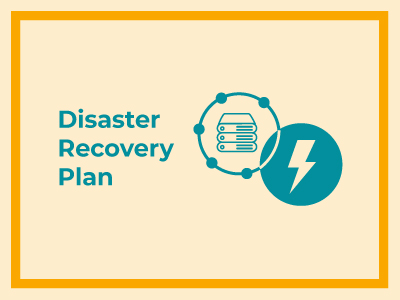Disasters, such as hardware failure, can happen anytime, anywhere! This is why you always need a disaster recovery plan for your company. Every business, regardless of the industry, must be equipped with a reliable and well-managed data backup and recovery system. This helps reduce downtime issues because of hardware failure, natural disasters, hacking of software systems, or human error.
It is no secret that data loss, such as loss of customer information, can have serious implications and ramifications for any business organization. Despite this, a large number of businesses do not even have a DRP (disaster recovery plan) in place.
What is Disaster Recovery Planning?
We can define disaster recovery as a form of security planning that allows your business to maintain and recover infrastructure and critical systems after a disaster. Keep in mind that with good planning, your business will be able to resume standard operations by regaining access to applications, hardware, and data.
You can achieve this through a disaster recovery plan — a set of IT policies and procedures that your organization follows in the event of a disaster.
Cost of Downtime
Keep in mind that according to Gartner, the cost of network downtime (average) is around $5,600 per minute based on multiple surveys. Although a formula for determining your downtime cost is complicated, you can imagine how quickly a loss of productivity will likely impact your bottom line.
Regardless of how you look at it, eliminating or reducing downtime will help save you considerable money, especially in the long run. And as with any company, it is likely that some areas or facets of your operations will need more immediate data recovery attention compared to others.
This is why you should determine which areas are top priorities for getting back online based on your business objectives and goals.
Take Inventory
It is best to review your equipment, hardware, and applications and note what will have to be replaced in the event of serious damage during an event. This is important as it ensures that components and parts can be quickly arranged by contacting the vendors for replacements or solutions in order to help your business recover.
How a DRP Reduces Downtime
Leverage Cloud Solutions
Although every continuity and disaster recovery plan is different to address the risks and needs on an individual basis, note that some strategies are pretty common in IT downtime reduction. You should know that one of these strategies is to make better use of the cloud.
Did you know that cloud storage and cloud solutions can allow your teams to continue their work seamlessly even when they lose access to your in-house servers and networks? This allows your business to work flexibly around an IT crisis.
Practice Makes Perfect
Note that trial by fire isn’t a suitable test strategy for your disaster recovery plan. Rather, you should schedule regular tests in order to determine the efficacy of your plan and identify any potential areas that may need to be revisited or updated to reduce downtime.
Ideally, it is best to run a partial test every six months (at least) and a full test every year. You should also randomly conduct surprise tests in order to observe whether your employees are prepared to handle a crisis as well as to gauge practical response times.
Data Backups
There is no doubt that cloud storage is only one example that shows how important it is for your business to have access to files and data when an IT crisis happens. And if you can just rely on one piece of hardware, software, or one network to perform your work, your workflow is very easy to interrupt, and you don’t want that.
With regular data backups of crucial data and files, you can ensure that your data remains accessible and secure at all times. Data backups are essential as they protect against data loss, which is, sadly, a highly common occurrence in many emergencies.
Final Thoughts
DRP can seem complicated; however, with the right partner, such as Prescient, and tools, it is easy. Every organization or business should ensure the continuity of network operations and internet connectivity, and data protection is included as part of its disaster planning. Keep in mind that this foresight will help protect your business from the various consequences of downtime while reducing the length of costly outages when the unexpected happens.
Prescient provides disaster recovery solutions and disaster recovery planning and consulting services. The expert IT professionals at Prescient can regularly test your disaster recovery plan so that it’s available on-demand. If you’re searching for a reliable and affordable DRP service, contact Prescient.


